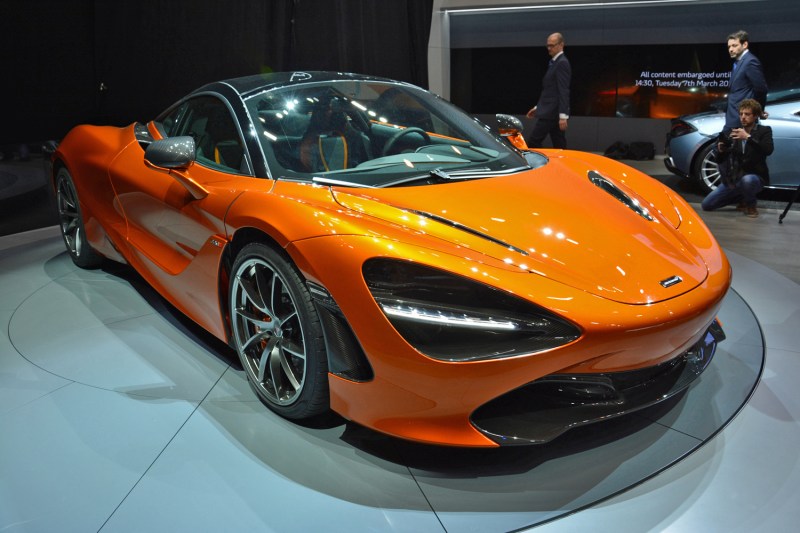And on the millionth day, McLaren said: “Thou shalt not be teased any longer.”
Here it is, folks. The McLaren 720S Super Series has been revealed at the 2017 Geneva Motor Show after months of rumors and leaked images. Replacing the insanely fast 650S, the 720S introduces McLaren’s latest technology and design language.
“Super Series is the core of the McLaren business and personifies the blend of extreme performance, crafted luxury and unparalleled driver involvement that is the McLaren heartland,” said Mike Flewitt, Chief Executive Officer, McLaren Automotive. “This is the first time we have replaced a product family and the new 720S is absolutely true to McLaren’s pioneering spirit in being a revolutionary leap forwards, both for our brand and the supercar segment.”
If you thought the 650S was a design inspired by aerodynamics, prepare to reset your understanding of that concept. From first glance, the 720S absolutely screams efficient motivation. Notably, the 720S lacks radiator intakes on the side of the car, and instead uses a ‘double-skin’ aerodynamic form of the dihedral doors, which channel air to the high-temperature radiators that cool the mid-mounted engine. The Super Series also replaces traditional headlights with thin LED beams, mounted within air channels.
Beneath the curvy bodywork is an all-new carbon fiber monocoque chassis that is key to the car’s overall weight of just over 2,800 pounds. By comparison, the McLaren 650S weighs just over 3,100 pounds. What isn’t carbon fiber is aluminum alloy, including the sleek new wheels.
Power is provided by a new 4.0-liter twin-turbocharged V8 (based on the 3.8-liter TT mill in the 650S) producing 720PS (710 horsepower) and 568 pound-feet of torque. A seven-speed dual-clutch transmission delivers this mountain of grunt to the rear wheels for a 0 to 60 mph sprint of just 2.8 seconds and a top speed of 212 mph. The 720S also features the next generation of McLaren’s active suspension management, Proactive Chassis Control II.
Inside, McLaren’s minimalist cabin design continues, albeit with a bit more leather and machined aluminum touches. A new driver interface, which includes a folding driver display and center-mounted infotainment screen will debut in the 720S.
Three trims will be available initially: standard, Performance, and Luxury. The difference between these grades is still a mystery, however. Customers will begin receiving their cars in May. Prices for the 720S start at £208,600 ($254,300).












